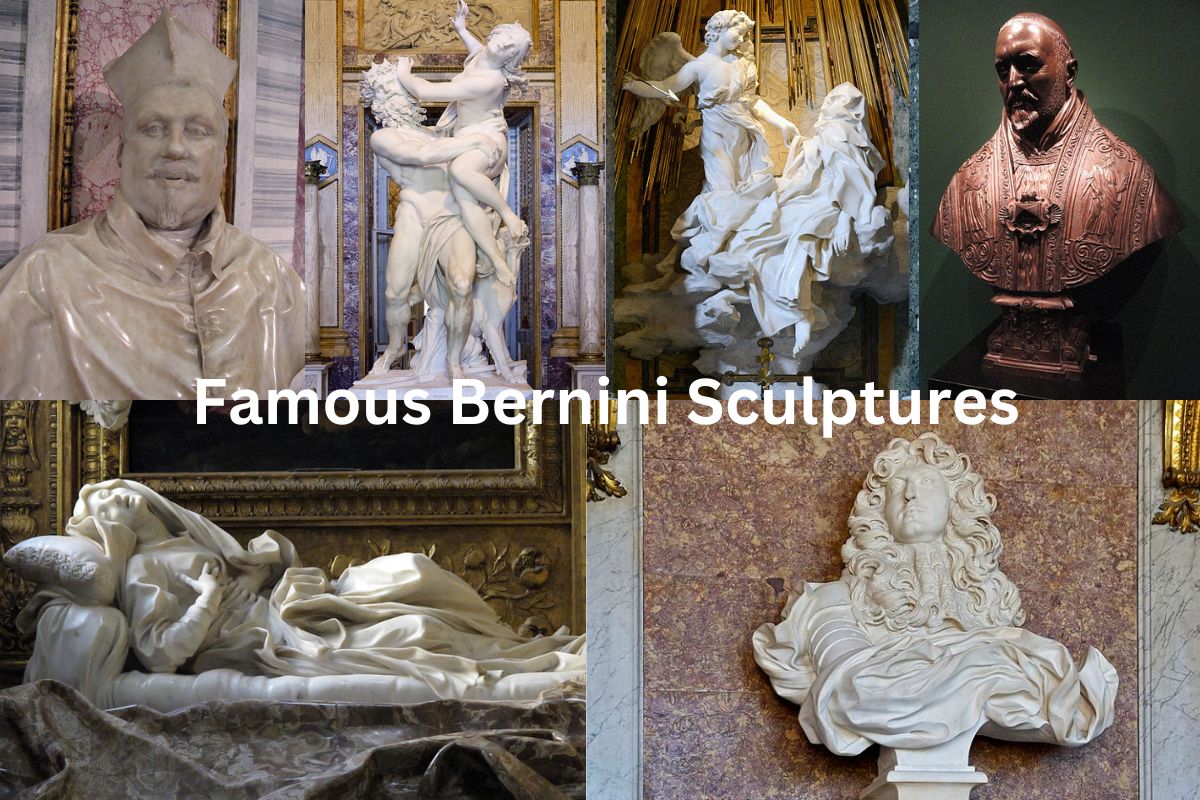Gian Lorenzo Bernini was a prominent Italian sculptor and architect who lived in the 17th century. He was a key figure in the Baroque movement and his works are renowned for their dramatic and emotive qualities.
Bernini’s sculptures are characterized by their realism and dynamic compositions, which give the impression that the figures are alive and in motion.
Some of Bernini’s most famous sculptures include “Apollo and Daphne,” which depicts the moment when the god Apollo chases after the nymph Daphne and she is transformed into a laurel tree.
Another great work is “The Ecstasy of St. Teresa,” which shows the saint in a state of mystical ecstasy as she is pierced by an angel’s arrow.
Bernini was also commissioned to create several sculptures for the Vatican, including the “Bust of Pope Paul V” and the “Tomb of Pope Urban VIII.”
One of his most impressive works is the “Fontana dei Quattro Fiumi” (Fountain of the Four Rivers), which is located in the center of Rome and features four larger-than-life figures representing the major rivers of the world.
Overall, Bernini’s sculptures are known for their dramatic expressions and lifelike movements, which make them some of the most impressive works of art from the Baroque period.
Famous Bernini Sculptures
1. Apollo and Daphne
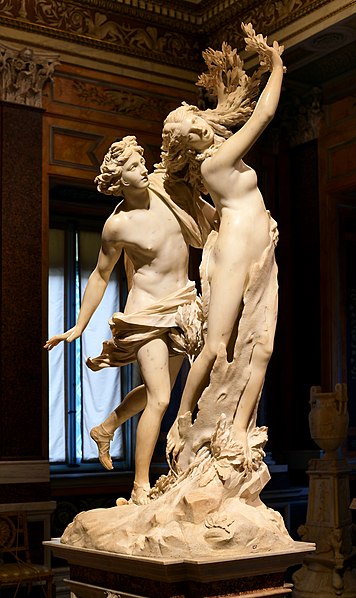
“Apollo and Daphne” is a famous sculpture created by Gian Lorenzo Bernini in the early 17th century. The sculpture portrays the mythological story of the god Apollo and the nymph Daphne, as told in Ovid’s “Metamorphoses.”
The sculpture depicts the moment when Apollo chases after Daphne, who was turned into a laurel tree by her father, the river god Peneus, to escape Apollo’s advances.
Apollo’s outstretched arm reaches towards Daphne as she turns into a tree, with her fingers transforming into branches and her feet taking root in the ground.
The sculpture is known for its intricate details and dynamic composition. Bernini captures the movement and emotion of the figures with great skill, creating a sense of tension and drama in the piece.
The texture of the tree bark and the softness of Daphne’s hair and drapery are particularly impressive, adding to the realism of the sculpture.
Today, “Apollo and Daphne” can be seen at the Borghese Gallery in Rome, where it is considered one of the greatest masterpieces of Baroque sculpture.
2. The Ecstasy of St. Teresa
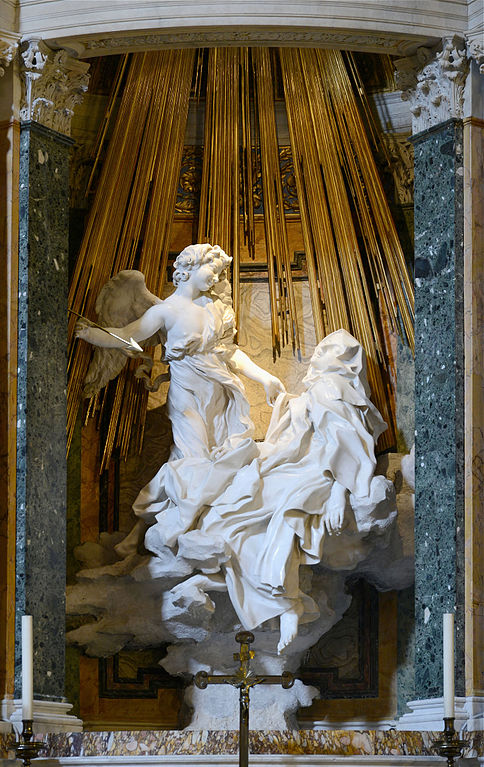
“The Ecstasy of St. Teresa” is a sculpture created by Gian Lorenzo Bernini in the 17th century. It is located in the Cornaro Chapel of the church of Santa Maria della Vittoria in Rome.
The sculpture depicts St. Teresa of Avila, a Spanish mystic and Carmelite nun, in a state of spiritual ecstasy. She is shown reclining on a cloud, her head thrown back and her eyes closed in ecstasy. An angel is depicted hovering above her, holding an arrow which is about to pierce her heart.
The sculpture is known for its emotional intensity and theatricality. Bernini’s skill in creating a sense of movement and drama is evident in the twisting drapery of St. Teresa’s robe and the flowing fabric of the angel’s garments.
The use of light and shadow creates a sense of depth and realism, with the golden rays of light surrounding St. Teresa adding to the mystical atmosphere of the sculpture.
“The Ecstasy of St. Teresa” is considered one of the masterpieces of Baroque sculpture, and is widely regarded as one of Bernini’s greatest works.
The sculpture has inspired countless artists over the centuries, and continues to captivate visitors with its powerful depiction of spiritual devotion and ecstasy.
3. David

“David” is a sculpture created by Gian Lorenzo Bernini in the early 17th century. The sculpture depicts the biblical hero David, who defeated the giant Goliath with a single stone from his sling.
Unlike other sculptures of David, such as Michelangelo’s David, Bernini’s David is depicted in a dramatic pose, appearing to be in motion as he prepares to launch the stone from his sling. He is shown with a tense expression, his muscles bulging and his veins visible as he readies himself for battle.
The sculpture is known for its realistic and dynamic portrayal of the human body in motion. Bernini’s skill in sculpting details such as the tension in David’s fingers and the folds of his clothing make the sculpture appear lifelike and vibrant.
“David” is currently located at the Galleria Borghese in Rome and is considered one of the greatest examples of Baroque sculpture. The sculpture is admired for its dramatic intensity and for Bernini’s ability to capture the moment of tension and action in the story of David and Goliath.
4. The Attack of Persephone
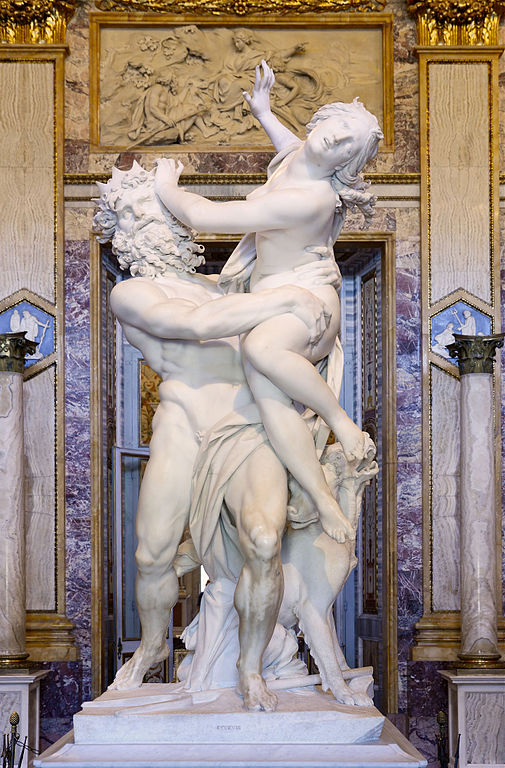
“The Attack of Persephone” is a statue created by Bernini in the 17th century. The sculpture depicts the mythological story of the abduction of the goddess Persephone by Hades, the god of the underworld.
In the sculpture, Hades is shown grasping Persephone by the waist, lifting her up and away from the earth. Persephone struggles against his grasp, her body twisting and contorting in a desperate attempt to break free.
The sculpture is known for its dynamic composition and emotional intensity. Bernini’s skill in sculpting the human form is evident in the intricate details of the figures, from the flowing drapery of Persephone’s clothing to the muscles and tendons in Hades’ arms and back.
“The Attack of Persephone” is currently located at the Galleria Borghese in Rome and is considered one of Bernini’s most impressive sculptures. The sculpture is admired for its realism and for the way in which it captures the moment of violent action in the story of Persephone’s abduction.
5. Bust of Louis XIV
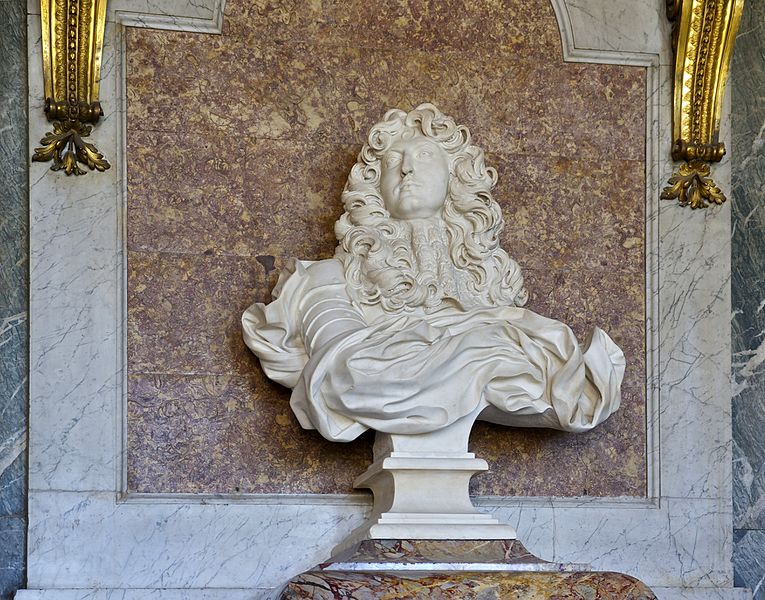
The Bust of Louis XIV is a sculpture created by Gian Lorenzo Bernini in the late 17th century. The sculpture depicts the French king Louis XIV in a powerful and regal pose, with his head turned to the side and his gaze directed towards the viewer.
The bust is made of marble and is highly detailed, with intricate patterns on Louis XIV’s clothing and a lifelike representation of the king’s face. The king is shown wearing a wig and a ceremonial cloak, and his expression is one of stern determination and authority.
The Bust of Louis XIV is considered one of Bernini’s greatest works and is widely regarded as one of the most impressive busts of the Baroque era.
The sculpture captures the majesty and power of Louis XIV, who was known for his extravagant lifestyle and his role in establishing France as a major European power.
6. Bust of Pope Paul V
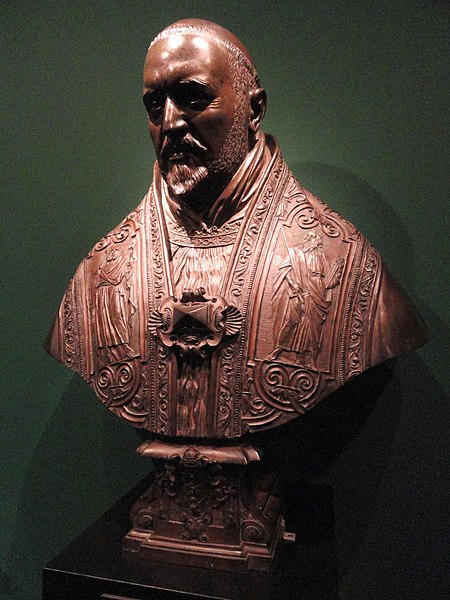
The Bust of Pope Paul V is a sculpture created by Bernini in the early 17th century. The sculpture depicts the pope, who was Bernini’s patron, in a regal pose with his head turned slightly to the side.
The bust is made of marble and is highly detailed, with intricate patterns on the pope’s clothing and a lifelike representation of his face. The pope is shown wearing his ceremonial robes and the distinctive papal tiara, which was a symbol of his authority as the leader of the Catholic Church.
The Bust of Pope Paul V is considered one of Bernini’s most important works and is notable for its realism and for the way in which it captures the personality and character of the pope.
The sculpture is also significant because it was one of the first major commissions that Bernini received, and helped to establish his reputation as a master of Baroque sculpture.
7. Fontana dei Quattro Fiumi (Fountain of the Four Rivers)
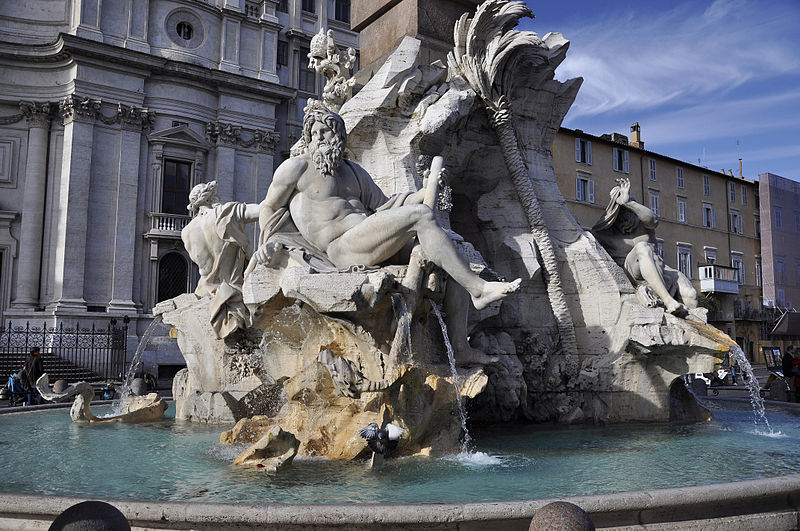
The Fontana dei Quattro Fiumi (Fountain of the Four Rivers) is a famous fountain created by Gian Lorenzo Bernini in the 17th century. The fountain is located in the center of the Piazza Navona in Rome, Italy.
The fountain features four large sculptures that represent the major rivers of the world: the Nile, the Danube, the Ganges, and the Rio de la Plata. Each of the sculptures is shown in a different pose and with different symbols, such as animals and plants, which are associated with the particular river that they represent.
At the center of the fountain is an Egyptian obelisk, which was originally located at the nearby Circus of Maxentius and was moved to its current location in the 17th century.
The Fontana dei Quattro Fiumi is considered one of the greatest masterpieces of Baroque sculpture and is admired for its intricate details and dynamic composition.
The fountain is a testament to Bernini’s skill as a sculptor and his ability to create works of art that are both beautiful and functional. Today, the fountain is a popular tourist attraction and a symbol of the rich artistic heritage of Rome.
8. Tomb of Pope Urban VIII
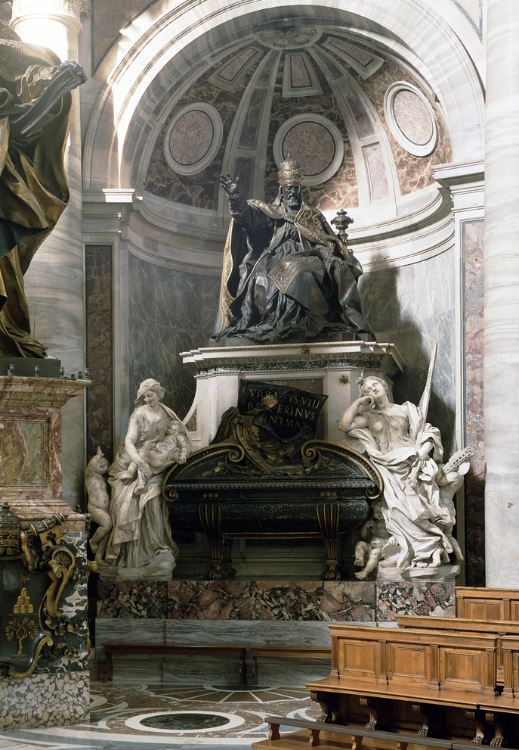
The Tomb of Pope Urban VIII is a sculpture created by Gian Lorenzo Bernini in the 17th century. The tomb is located in St. Peter’s Basilica in Rome and was commissioned by Pope Urban VIII, who was Bernini’s patron.
The tomb features a large bronze statue of the pope, which is shown in a seated position with his right hand extended in a blessing gesture. The pope is surrounded by allegorical figures representing virtues such as Justice, Truth, and Prudence, as well as a personification of Death.
The tomb is notable for its intricate details and its impressive size, which make it one of the most impressive funerary monuments in St. Peter’s Basilica. The statue of Pope Urban VIII is particularly impressive, with its detailed features and lifelike expression.
The Tomb of Pope Urban VIII is considered one of Bernini’s greatest works and is admired for its beauty and its symbolic meaning. The monument is a testament to the power and influence of the Catholic Church in the Baroque era, and to Bernini’s skill as a sculptor and artist.
9. Altar of the Blessed Sacrament
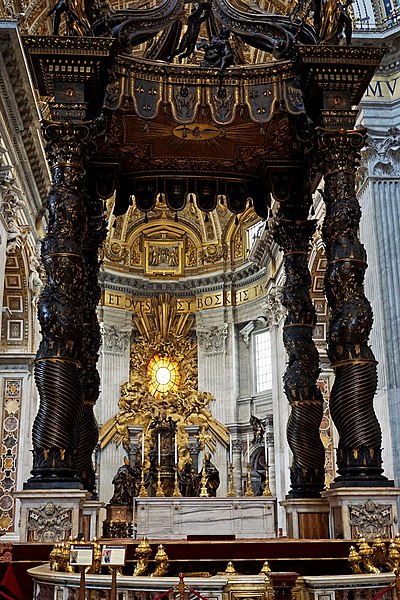
The Altar of the Blessed Sacrament is a Bernini sculpture created in the 17th century. The sculpture is located in St. Peter’s Basilica in Rome and was commissioned by Pope Urban VIII, who was Bernini’s patron.
The Altar of the Blessed Sacrament features a large bronze sculpture of a baldachin or canopy, which is supported by four spiral columns. The sculpture is designed to draw the eye upwards towards the ceiling of the basilica and to create a sense of grandeur and majesty.
At the base of the baldachin is a bronze altar, which is decorated with intricate carvings and features a sculpture of a dove, symbolizing the Holy Spirit. The altar is surrounded by angels, who are depicted holding the instruments of the Passion, such as the crown of thorns and the nails.
The Altar of the Blessed Sacrament is considered one of Bernini’s greatest works and is admired for its beauty and its symbolic meaning.
The monument is a testament to the power and influence of the Catholic Church in the Baroque era, and to Bernini’s skill as a sculptor and artist. It is also a significant example of the use of sculpture and art to create a sense of awe and reverence in a religious context.
10. Bust of Cardinal Scipione Borghese
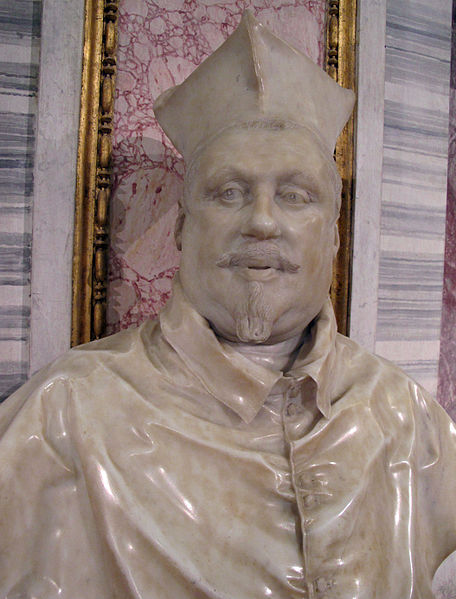
The Bust of Cardinal Scipione Borghese is a famous bust sculpture created by Gian Lorenzo Bernini in the 17th century. The sculpture is located in the Borghese Gallery in Rome, which is named after Cardinal Borghese.
The bust depicts Cardinal Borghese, who was Bernini’s patron and a prominent art collector, in a regal pose with his head turned slightly to the side. The cardinal is shown wearing his robes and the distinctive hat known as the galero, which was a symbol of his rank in the Catholic Church.
The sculpture is notable for its realism and for the way in which it captures the personality and character of Cardinal Borghese. Bernini’s skill in sculpting the human form is evident in the intricate details of the cardinal’s clothing and the lifelike representation of his face.
The Bust of Cardinal Scipione Borghese is considered one of Bernini’s greatest works and is admired for its beauty and its historical significance. The sculpture is a testament to the power and influence of the Borghese family in the Baroque era, and to Bernini’s skill as a sculptor and artist.
11. The Blessed Ludovica Albertoni
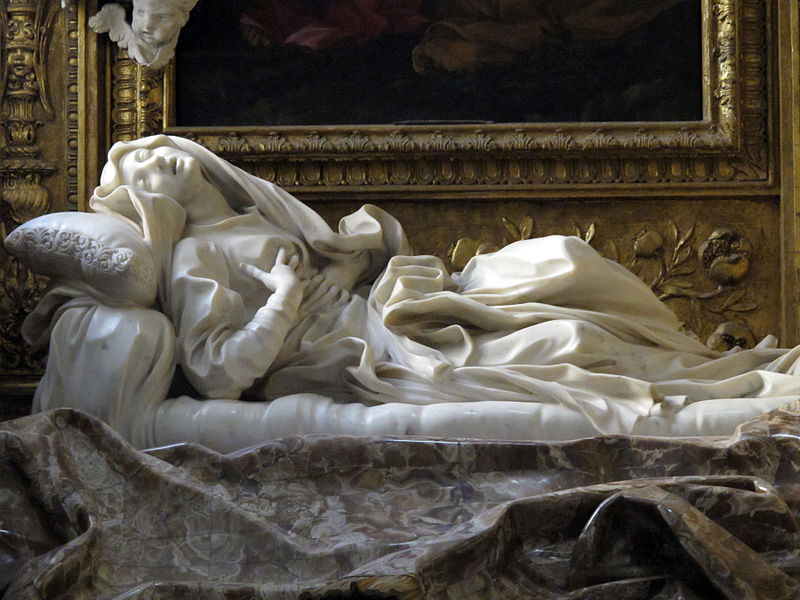
“The Blessed Ludovica Albertoni” is a sculpture created by Gian Lorenzo Bernini in the 17th century. The sculpture is located in the Church of San Francesco a Ripa in Rome.
The sculpture depicts Ludovica Albertoni, a noblewoman who lived in Rome in the 16th century and was later declared a saint. She is shown in a state of mystical ecstasy, with her head thrown back and her body contorted in a pose of spiritual surrender.
The sculpture is notable for its emotional intensity and for the way in which it captures the moment of spiritual transcendence. Bernini’s skill in sculpting the human form is evident in the intricate details of the drapery and the lifelike representation of Ludovica’s face and body.
The Blessed Ludovica Albertoni is considered one of Bernini’s greatest works and is admired for its beauty and its spiritual power. The sculpture is a testament to the power of art to convey religious devotion and to Bernini’s skill as a sculptor and artist.

